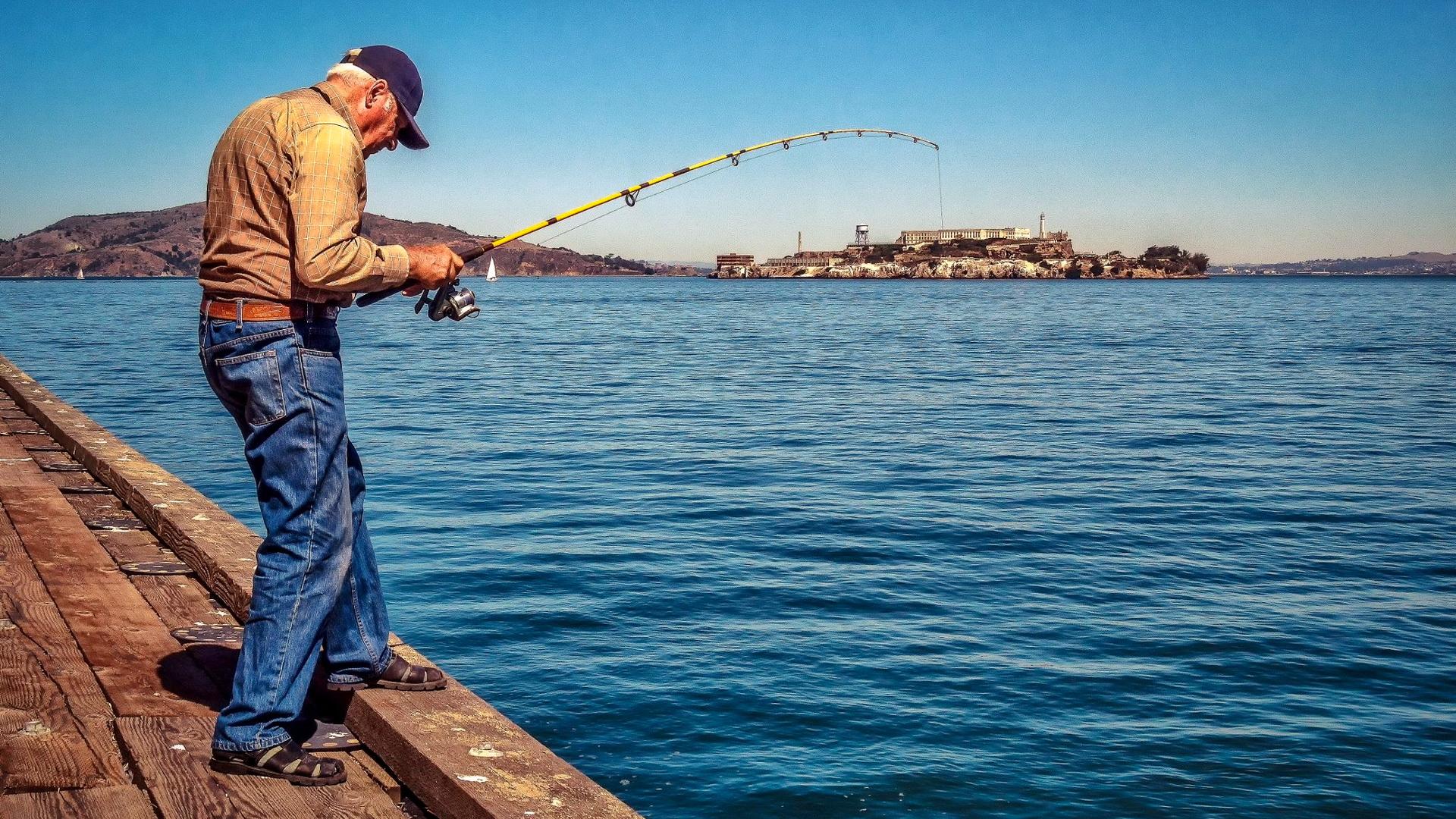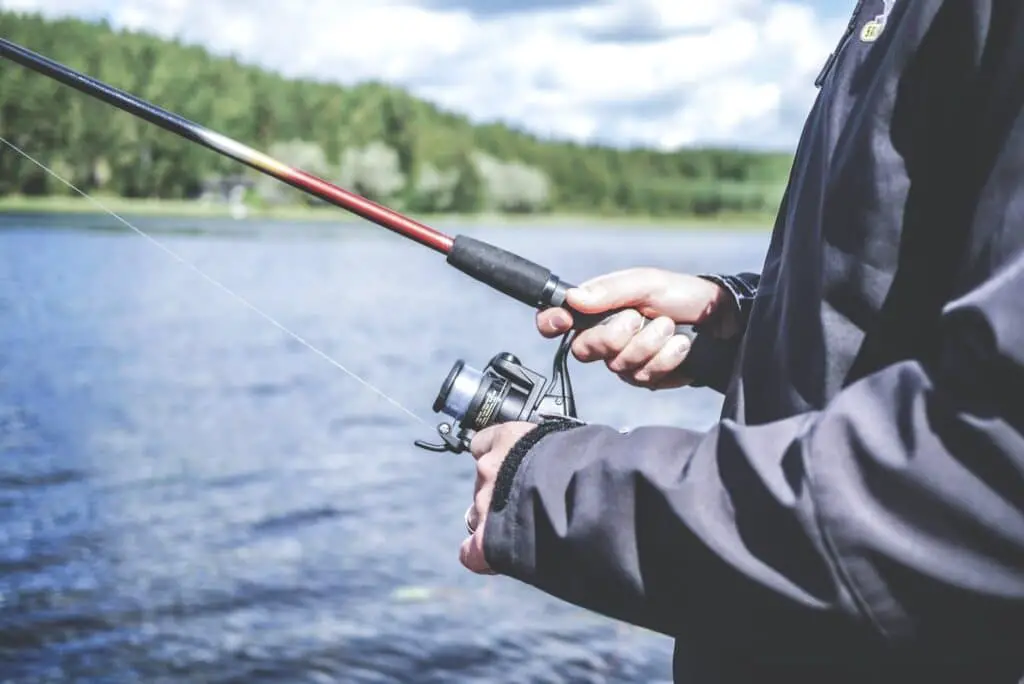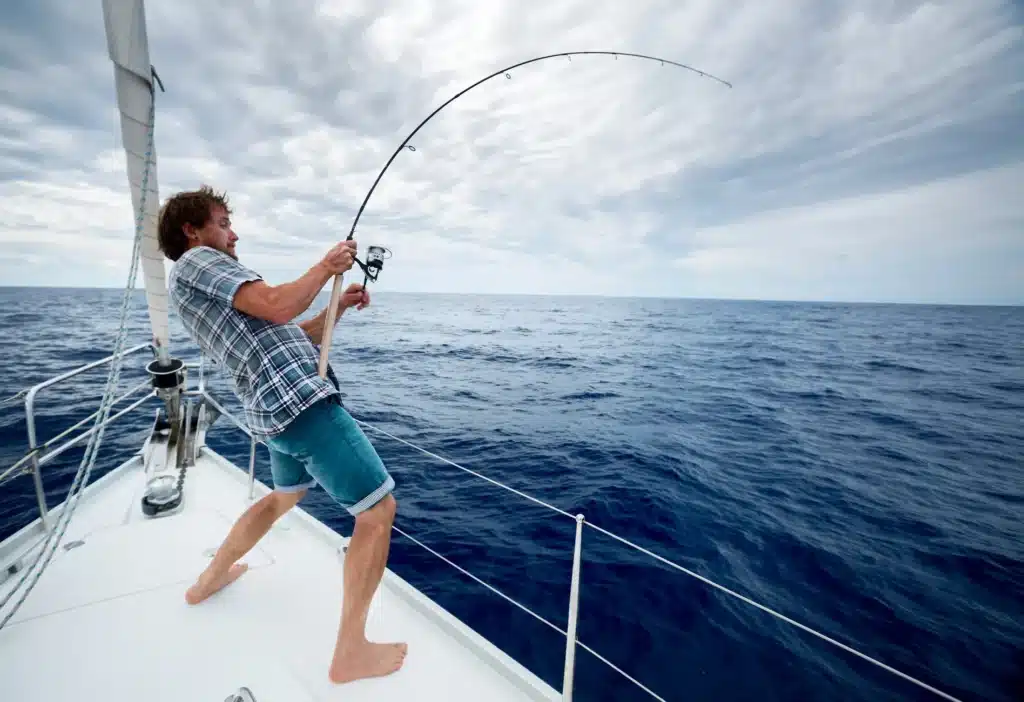How To Catch Fish In Cold Water

Introduction
Fishing in cold water can present a unique set of challenges for anglers. As the temperatures drop and aquatic ecosystems undergo changes, understanding how to adapt your fishing techniques becomes essential for a successful day on the water. Coldwater fishing not only demands patience and adaptability but also a keen understanding of the behavior of fish in these conditions. In this guide, we will explore the strategies and tactics you can employ to increase your chances of catching fish in cold water. Whether you’re a seasoned angler or a novice looking to explore the wonders of winter fishing, this information will help you navigate the chillier waters with confidence.

What are the key differences in fish behavior between cold water and warm water conditions?
Fish behavior undergoes significant changes when transitioning from warm water to cold water conditions. Understanding these differences is crucial for successful cold water fishing. Here are the key distinctions:
Metabolism and Activity Levels: In cold water, fish have slower metabolic rates, which means they are generally less active. They conserve energy and require less food. This reduced activity makes them less likely to chase fast-moving baits.
Depth and Location: Coldwater fish tend to move to deeper, more stable water as the temperature drops. They seek out areas where the temperature is more consistent and suitable for their metabolism. Deeper holes, underwater structures, and slow-moving currents become their preferred habitats.
Feeding Patterns: Coldwater fish are opportunistic feeders, but they are more selective about when and what they eat. They may feed sporadically during the day, often during periods of slightly warmer water temperatures. Dawn and dusk are often prime feeding times.
Bait Preferences: In colder water, fish may not respond as readily to live bait or fast-moving lures. They are more likely to go for slow-moving baits like jigs, soft plastics, or bait presentations. Matching the hatch becomes crucial; using bait that mimics local prey can increase your success.
Fighting Characteristics: Coldwater fish are less likely to exhibit the acrobatic jumps and strong runs seen in warmer water. They may have a more lethargic response when hooked, making them easier to reel in.
Patience is Key: Anglers must be patient when fishing in cold water. Fish may take longer to commit to a strike, so slower retrieves and gentle presentations are often more effective.
Weather Impact: Weather conditions play a significant role in coldwater fishing. A sudden cold snap can slow down fish activity, while warming trends can trigger feeding sprees.
Seasonal Patterns: Fish may follow distinct seasonal patterns in cold water, moving from deeper wintering holes to shallower areas during the pre-spawn and spawning seasons.
Understanding the key differences in fish behavior between cold and warm water conditions is essential for adapting your fishing strategy. Patience, adaptability, and the ability to read water temperatures and seasonal patterns are critical skills when pursuing fish in colder environments. By tailoring your approach to these nuances, you can increase your chances of success during coldwater fishing expeditions.
How does water temperature affect the choice of fishing location in cold weather?
Water temperature is a crucial factor that significantly influences the choice of fishing locations in cold weather. Understanding this impact is fundamental to a successful angling experience during colder seasons.
Preferred Temperature Range: Fish, like all cold-blooded creatures, are highly influenced by the temperature of their surroundings. In cold weather, they seek out water temperatures that are more comfortable for their metabolism. This means that they often move to areas where the water is relatively warmer.
Deeper Water: As cold weather sets in, fish tend to move to deeper parts of the water body. Deeper water offers more stable temperatures because it is less affected by surface temperature fluctuations. Additionally, the deeper water often retains some warmth from the previous season, making it more attractive to fish.
Underwater Structures: Structures such as underwater rocks, fallen trees, submerged vegetation, and underwater cliffs can serve as thermal refuges for fish. These areas absorb and retain heat, providing fish with relatively warmer spots in which to seek shelter.
Sunlight Exposure: In cold weather, fish may also be influenced by the availability of sunlight. Sunny areas can warm up the water slightly, attracting fish. South-facing banks and shorelines often receive more sunlight and can be productive fishing spots.
Wind Patterns: Wind can affect the distribution of warm and cold water within a body of water. Windward shorelines tend to have cooler water due to upwelling, while leeward shorelines can be slightly warmer. Understanding wind patterns and their impact on water temperature can help anglers choose productive locations.
Inflow Sources: Streams, rivers, and tributaries that feed into larger bodies of water often bring warmer water with them. Fish may gather near these inflow sources to take advantage of the temperature differential.
Seasonal Changes: In some cases, fish may follow seasonal patterns, moving from deeper wintering holes to shallower areas as the season progresses and water temperatures begin to rise during the pre-spawn and spawning periods.
Water temperature is a pivotal factor in determining fishing locations during cold weather. Anglers must be aware of these temperature-related factors and adapt their fishing strategies accordingly. By seeking out areas with more suitable water temperatures and understanding the nuances of temperature distribution within a water body, anglers can significantly increase their chances of success when fishing in colder conditions.
What types of bait or lures are most effective for cold water fishing?
Selecting the right bait or lures for cold water fishing is essential to entice sluggish fish during the chillier seasons. Coldwater fish have different feeding patterns and preferences compared to their warmer-water counterparts, which necessitates a thoughtful choice of baits and lures. Here are some of the most effective options:
Live Bait: Live bait can be highly effective in cold water. Common choices include minnows, shiners, nightcrawlers, and crayfish. These natural baits emit scents and movements that can trigger strikes from lethargic fish. Using a slow presentation with live bait is often effective.
Soft Plastics: Soft plastic baits like worms, grubs, and creature baits are versatile options for cold water fishing. They can be rigged in various ways, such as Carolina or Texas rigs, and their subtle movements can be enticing to fish in cold conditions. Choose natural colors and fish them slowly along the bottom.
Jigs: Jigs are a go-to choice for coldwater fishing. They imitate prey that fish might encounter in their winter habitats. Slowly dragging or hopping jigs along the bottom can mimic the natural movements of forage species and attract fish.
Spoons: Spoons can work well in cold water, especially when fish are feeding on larger prey like baitfish. Their shiny, wobbling action can trigger strikes. Fish them with a slow and deliberate retrieve.
Swimbaits: Soft swimbaits, which resemble injured or dying baitfish, can be effective for targeting coldwater predators. Retrieve them slowly to imitate the vulnerable movements of prey.
Crankbaits: While not as effective as slow-moving presentations, some coldwater fish, like bass, may still strike crankbaits. Opt for shallow-diving or lipless crankbaits and work them slowly to stay in the strike zone.
Spinnerbaits: Spinnerbaits with willowleaf or Colorado blades can create vibrations and flash that appeal to fish’s senses. Slowly retrieve them along the contours of structures.
Live-Action Lures: Some lures are designed to mimic the natural movements of prey fish. These lures, often equipped with articulated joints or paddle tails, can be enticing to fish in cold water.
Scented Baits: Adding scent to your baits or lures can be particularly effective in cold water, as it can help fish locate and commit to the strike. Many scented soft plastics and attractants are available for this purpose.
In cold water, the key is to slow down your presentation and choose baits or lures that closely resemble the natural forage of the fish you’re targeting. Experimenting with different options and paying attention to fish behavior can help you determine which baits or lures are most effective on a given day.
Are there specific fish species that are more active during colder seasons?
Yes, there are specific fish species that tend to be more active during colder seasons, particularly in late fall, winter, and early spring when water temperatures drop. These coldwater-loving species have adapted to thrive in chillier conditions, and they often become more active when other fish species may slow down. Here are some examples of fish species that are more active during colder seasons:
Trout: Various trout species, including rainbow trout, brown trout, and brook trout, are well-known for their coldwater preferences. They are active in cold weather and can often be found in streams, rivers, and lakes throughout the winter months. Trout feed opportunistically, and their activity levels can increase when water temperatures are cooler.
Salmon: Salmon, especially species like Chinook, Coho, and Atlantic salmon, are famous for their coldwater migrations. They are known to travel upstream to spawn during the fall and winter months, making them highly active in colder waters.
Walleye: Walleye are known to be coldwater predators that become more active as temperatures drop. They often feed during low-light conditions, such as dawn and dusk, making them a popular target for anglers in colder seasons.
Yellow Perch: Yellow perch are a cool-weather favorite, and they tend to gather in schools during the winter months. Ice anglers often target perch in frozen lakes, where they can be quite active.
Northern Pike: Northern pike are coldwater predators known for their voracious appetite. They continue to feed in cold water, and ice fishing for pike is a popular winter activity.
Whitefish: Whitefish are coldwater species that can be active year-round but are often more easily caught during the colder months. They are commonly found in cold, clear lakes and rivers.
Bluegill: While bluegill are active in warmer months, they can still be caught in the winter, especially when ice fishing. They tend to school up in deeper water and can be caught with small baits and lures.
It’s important to note that while these species are generally more active during colder seasons, their behavior can still vary depending on local conditions, including water temperature, food availability, and the specific water body. Successful anglers adapt their strategies to these factors, understanding the seasonal preferences and behaviors of the fish they are targeting.
What are some safety precautions to take when fishing in cold weather to prevent hypothermia or frostbite?
Fishing in cold weather can be an enjoyable experience, but it also comes with certain risks, particularly the threat of hypothermia and frostbite. To ensure your safety while pursuing your passion in colder conditions, it’s crucial to take several safety precautions:
Dress in Layers: Layered clothing is your first line of defense against the cold. Start with a moisture-wicking base layer to keep sweat away from your skin, add an insulating layer for warmth, and finish with a waterproof and windproof outer layer to protect against the elements. Make sure to wear thermal socks, insulated gloves, and a warm hat.
Wear Proper Footwear: Invest in insulated, waterproof boots to keep your feet warm and dry. Ensure they are not too tight to allow for adequate blood circulation.
Stay Dry: Bring a set of waterproof rain gear to protect against rain, snow, and splashes. Wet clothing can significantly increase the risk of hypothermia.
Use Hand and Foot Warmers: Disposable hand and foot warmers can provide extra warmth in extreme cold. Place them inside your gloves and boots for added comfort.
Protect Your Extremities: Your fingers, toes, nose, and ears are particularly susceptible to frostbite. Keep them covered and protected with appropriate gear. Consider heated gloves or mittens for extra warmth.
Carry Extra Clothing: Always pack extra clothing in a waterproof bag or container. In case you get wet or your clothes become damp, changing into dry attire can be a lifesaver.
Stay Hydrated and Nourished: Eating high-energy snacks and staying hydrated can help maintain your body temperature. Warm beverages, like hot soup or tea, can also provide comfort and warmth.
Know the Signs of Hypothermia: Learn the symptoms of hypothermia, such as shivering, confusion, slurred speech, and fatigue. If you or someone in your party exhibits these signs, take immediate action to warm up.
Fish with a Buddy: Fishing with a friend is not only more enjoyable but also safer. If one person experiences hypothermia or frostbite, the other can provide assistance.
Check Weather Conditions: Always check the weather forecast before heading out and be prepared for sudden changes in weather. High winds, freezing rain, or blizzards can pose serious dangers.
Ice Safety: If ice fishing, ensure the ice is thick enough to support your weight and follow ice safety guidelines. Carry ice picks or a rope for self-rescue in case of an accidental fall through the ice.
By following these safety precautions, you can enjoy cold weather fishing while minimizing the risk of hypothermia and frostbite. Always prioritize safety and be prepared for changing weather conditions to make your cold-weather fishing adventures safe and enjoyable.

Conclusion
Fishing in cold water may require a bit more effort and patience compared to warmer seasons, but it can be a rewarding and peaceful experience for those willing to embrace the challenges it presents. By understanding the changes in fish behavior, selecting the right gear and bait, and employing the appropriate techniques, you can increase your chances of success in cold water fishing.
Remember, every fishing trip is an opportunity to learn and adapt. Over time, you’ll gain valuable insights into the habits of fish in colder conditions, making you a more skilled and versatile angler. So, bundle up, prepare for the cold, and head out to your favorite fishing spot with confidence. With the knowledge and skills you’ve gained from this guide, you’ll be well-equipped to enjoy the serene beauty of coldwater fishing while reeling in your next trophy catch. Happy fishing!



